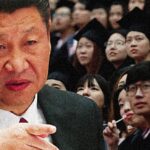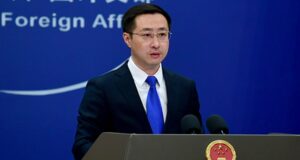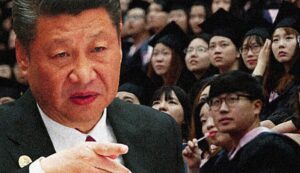
Neither country is ready for war, experts say.
A report published in December 2024 by the Center for Naval Analyses argues that Taiwan has much work to do “to prepare for the increasingly anticipated assault” by China. In essence, it must do more of the same that it is already doing.
“To hold the line against an aggressive China, Taiwan will have to commit to a holistic force restructuring, embrace cognitive warfare, and invest in drones—lots and lots of drones” (“Can Taiwan Repel a Chinese Invasion? New Report Highlights Key Weaknesses,” 19fortyfive.com, January 2025).
“Although the Taiwan military has committed to acquiring more than 3,200 drones by 2028, media reports that Ukraine’s military has 20,000 drone operators, acquired 100,000 drones in 2023, and plans to produce one million drones in 2024 suggest that Taiwan will need to dramatically expand its acquisition of un-crewed systems to meet wartime requirements,” the report states….
Taiwanese researchers are paying attention to the power of disinformation and propaganda in war. But while Taiwanese fact-checking centers have been established, the report states, the country’s psychological warfare strategy is incomplete, requiring more internet equipment and infrastructure to observe harmful messaging and respond to it in real time.
The CNA compares what Taiwan would likely be able to do if war broke out now to what Ukraine, dealing with the Russian invasion since February 2022, has in fact been doing—and concludes that the former has some catching up to do.
For example, in the area of communication satellites.
CNA’s report notes that Taiwan’s connectivity is supported by 14 submarine internet cables, making communications vulnerable to Chinese sabotage. Between 2017 and 2023 it states, cables to Taiwan have been cut 30 times, often by accident.
Taiwan is taking notice: In 2023, the Taiwan Ministry of Digital Affairs and Chunghwa Telecom finalized agreements with European companies, the report states, to establish satellite communication services and gain access to low-earth orbit networks….
[Report coauthor Kevin Pollpeter:] “They’ve got the idea, but are they taking it as far as they need to, even in regard to just Starlink or satellite communications? Granted, Ukraine is a lot larger than Taiwan; [the Taiwanese] wouldn’t need as many terminals. But Ukraine has about 40,000 Starlink terminals. Right now, Taiwan is talking about 700.”
Meanwhile, Air & Space Forces magazine cites two new RAND Corporation reports that describe a People’s Liberation Army “incapable of delegating authority to leaders who can adapt to complex, uncertain situations,” like the situations of any war that isn’t concluded pronto (“Not 10 Feet Tall: Experts Say China’s Military Faces Major Issues,” January 31, 2025).
Part of the problem is how the Chinese public perceives the PLA. In their Jan. 30 report “Factors Shaping the Future of China’s Military,” senior international defense researcher Mark Cozad and senior economist Jennie W. Wenger wrote that the PLA “has struggled to attract top-tier talent, particularly from China’s best universities.”
Another part of the problem is structure. In his Jan. 27 paper, “The Chinese Military’s Doubtful Combat Readiness,” senior defense researcher Timothy R. Heath argued that the PLA’s primary purpose is not to fight a war, but instead to keep the Chinese Communist Party in power, resulting in a military that prioritizes loyalty over merit.
“The core of the PLA’s system of political controls includes political commissars, party committees, and the political organization system,” Heath wrote. “These controls are designed to ensure the military’s subordination to CCP authority, and all come at the cost of reduced potential combat effectiveness.”…
The PLA has not fought a war since 1979, but its exercises so far are underwhelming; Chinese media “is replete with withering criticisms of the military’s inability to execute integrated joint operations and its lack of combat readiness,” Heath wrote.
Political commissars—military officers who specialize in politics and ideology—share coequal authority with commanders, which impairs decision-making, especially since anecdotal Chinese media reports show commissars lack basic military knowledge and are often not physically fit for frontline duty.
Both the CNA researchers and the RAND researchers see big problems. When surveying the weakness of the Republic of China’s military, the authors of the CNA report talk mostly about weapons, technology, and propaganda and counterpropaganda (“cognitive warfare”). They discuss force structure and training as well, including the need to arm and train private citizens in Taiwan, a step inhibited by a gun-control mentality.
But CNA does not describe anything like the ideologically produced incompetence and mediocrity that RAND finds to be pervasive among the leadership of the PRC military.











